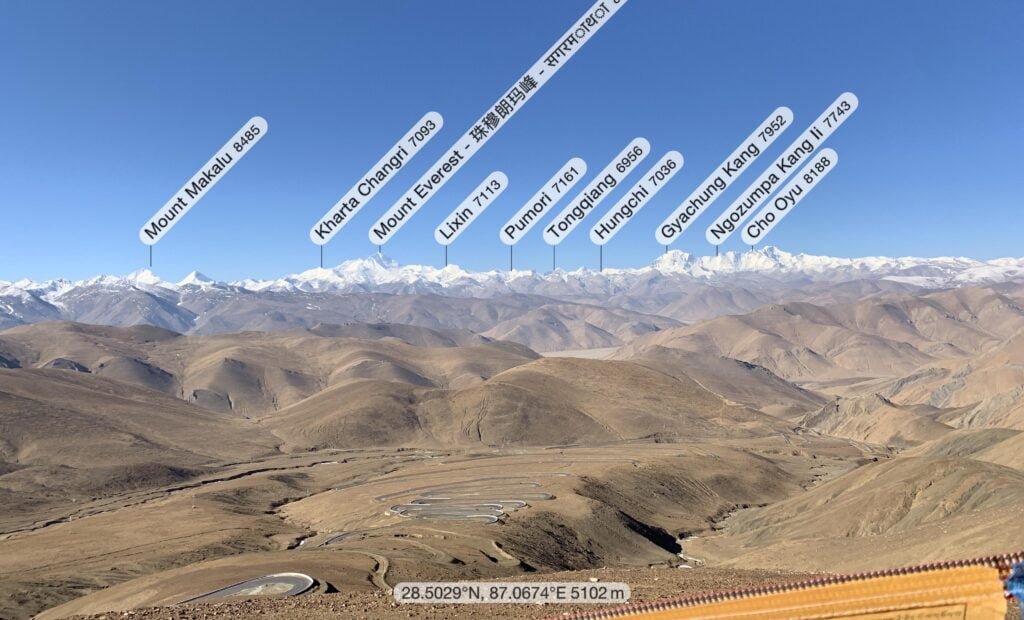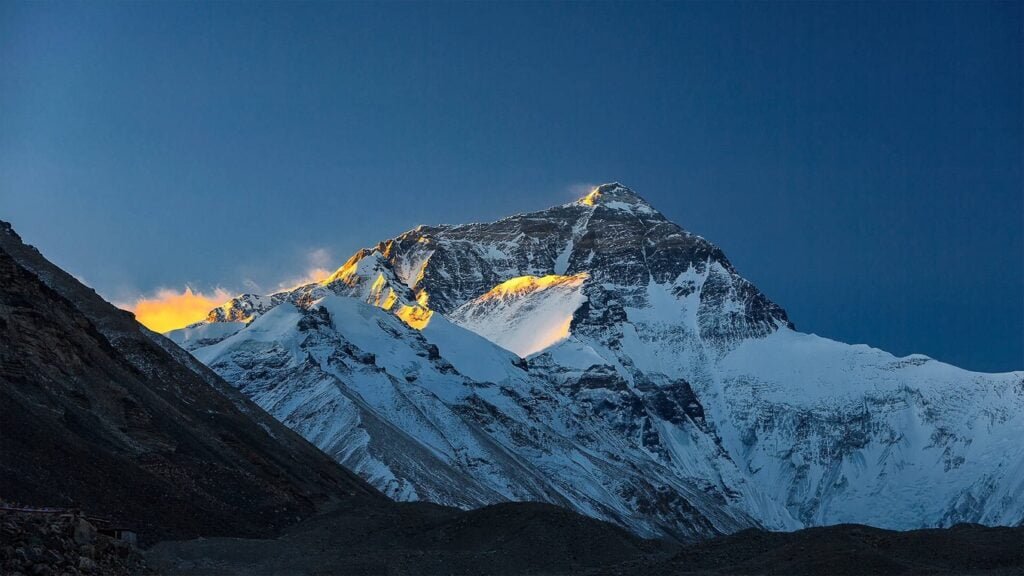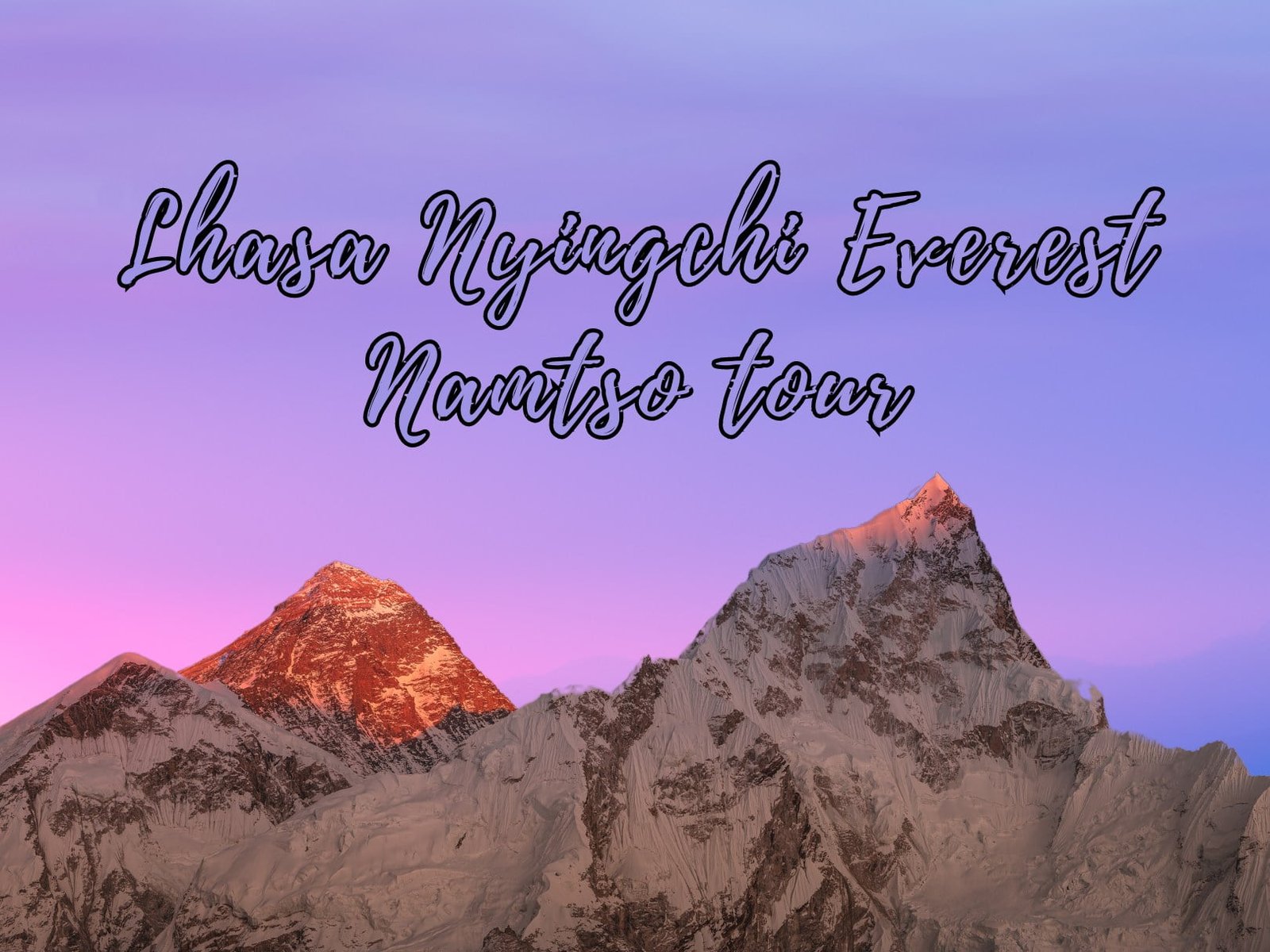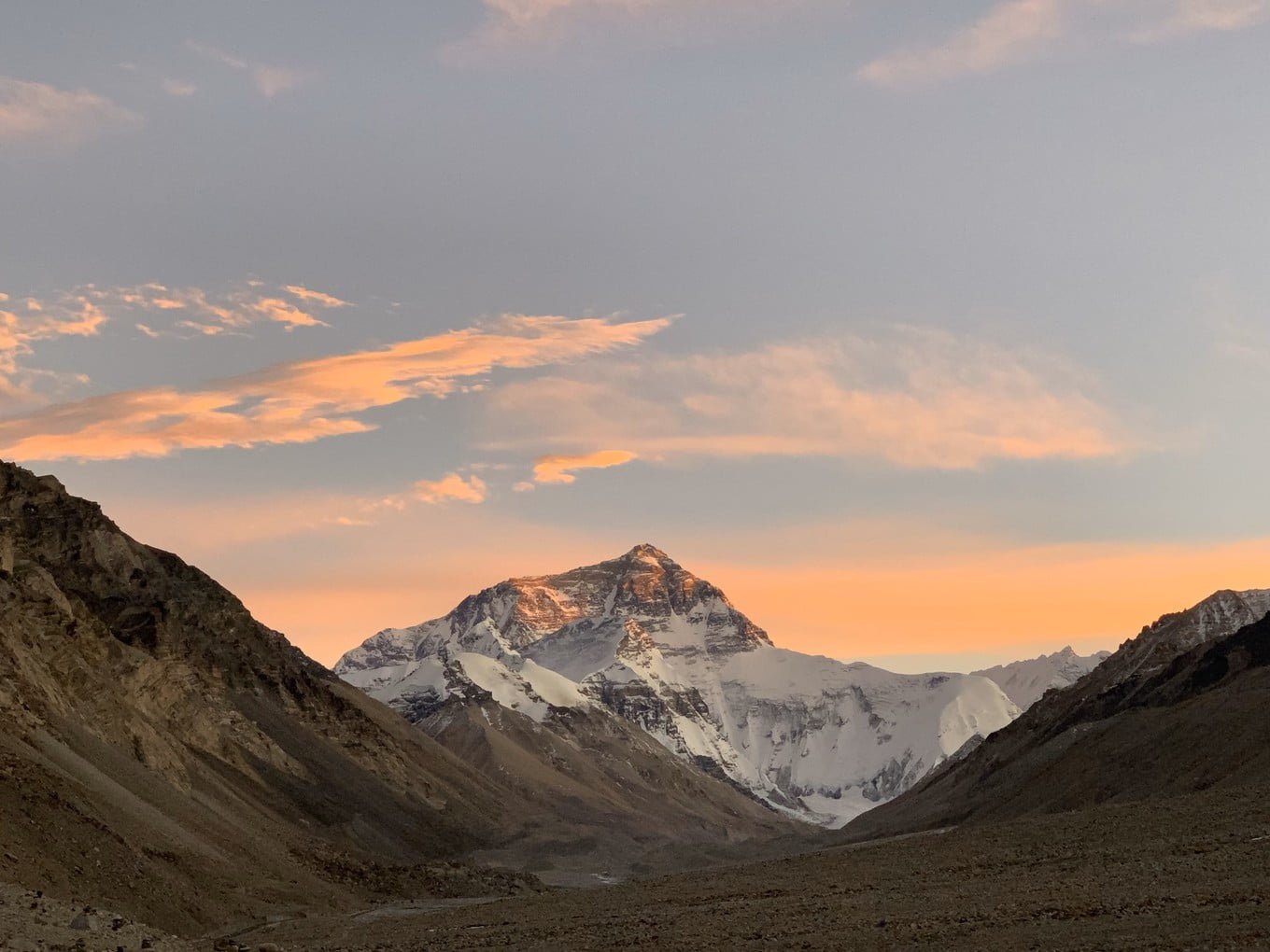Located in Tingri County on the border between China and Nepal, Mt. Chomolangma stands at an altitude of 8844 meters. Its range comprises nearby summits such as Lhotse (8516 m), Nuptse (7855 m), and Changtse (7580 m). All in all, there are four peaks that soar above 8000 meters and 38 peaks that exceed 7000 meters in elevation. According to Tibetan Buddhist tradition, the summit of Mt. Everest is home to Miyolangsangma, the Goddess of Infinite Generosity.
Mount Everest and Other 8000s meter Mountains
Mt. Everest also referred to as Mt. Jomolangma, which translates to Goddess of Earth in Tibet, stands as the tallest summit in the world. The peak reaches a height of 8,848 meters (29,028 feet) and is capped with snow year-round. The North Col of Everest can be found in Tinggri (Shegar), where massive glaciers and seracs add to its awe-inspiring beauty. For mountaineers around the globe, the peak is a sacred destination to climb. In recent times, an increasing number of mountaineers have begun their ascent from the Everest Base Camp in an attempt to conquer the world’s tallest summit, whereas tourists trek to the base of the peak to appreciate its splendour. The Mt. Everest Natural Scenery Area includes four peaks that exceed 8,000 meters in height, such as Mt. Mar Kalok, Lhotse, Jo Oyar, Shisha Bangma, and 14 other peaks that stand above 7,000 meters, which together form an incredible display of Jo Oyar, peak clusters, and mountain waves.

Different Names for Mount Everest
Mount Everest is known by several different names depending on the language and culture. Here are a few examples:
– In Nepali, the official language of Nepal where the mountain is located, Mount Everest is called Sagarmatha, which means “goddess of the sky.”
– In Tibetan, the language spoken by many people in the region, the mountain is called Chomolungma, which means “mother goddess of the world.”
– In Chinese, the mountain is known as Zhumulangma Feng, which translates to “Everest peak.”
– In English, the mountain was named after Sir George Everest, a British surveyor who was the first to record the height of the mountain. These different names reflect the various histories and cultures that surround the mountain, and each name carries its own significance and meaning.

Climbers Around the world to conquer Mt Everest
Mount Everest, the highest mountain in the world, has always been a challenge for climbers from around the world. Many climbers have set records and achieved great feats on its slopes, but the mountain has also claimed the lives of many. The China side of Mount Everest is known to be more challenging and dangerous than the Nepal side. The Chinese government has restricted access to this side of the mountain, and climbers need to obtain a special permit to climb it.
There have been many records set on Mount Everest, including the first successful ascent by Sir Edmund Hillary and Tenzing Norgay in 1953. Since then, many climbers have attempted and succeeded in climbing the mountain, including those who have reached the summit multiple times. However, climbing Mount Everest also comes with great risk.
Since the first successful ascent, over 300 people have lost their lives on the mountain. The China side of Mount Everest has claimed the lives of many climbers, including over 40 in the last decade. Despite the dangers, climbers continue to attempt to conquer Mount Everest, and some even attempt to break records. In 2019, a Nepalese climber set a new record for the fastest ascent of the mountain from the Nepal side. However, climbers must always be mindful of the risks and dangers that come with climbing such a formidable peak.
Tips before going to Mount Everest base camp
- Acclimatize properly: The Tibet side of Everest Base Camp is at a very high altitude, and it is crucial to acclimatize properly to avoid altitude sickness. Spend a few days in Lhasa (or nearby areas) to adjust to the altitude before heading to the base camp.
- Choose the right time to go: The best time to visit the Everest Base Camp in Tibet side is from April to May and September to November. During these months, the weather is dry and stable, and the views are spectacular.
- Pack wisely: As you will be trekking at a high altitude, it is important to pack lightweight and warm clothes. Make sure to carry a good quality down jacket, a sleeping bag, a warm hat and gloves, and appropriate trekking shoes.
- Follow the local customs: Tibet is a culturally rich place, and it is important to respect the local customs and traditions. Before you visit, learn about the local customs and etiquette to avoid any cultural misunderstandings.
- Stay hydrated: Drinking plenty of water is essential to avoid altitude sickness. Carry a reusable water bottle and keep sipping on water throughout the trek.
- Be prepared for extreme weather conditions: Weather conditions at the Everest Base Camp can be unpredictable and harsh. Be prepared for extreme weather conditions like snow, strong winds, and sudden changes in temperature.
- Pack some energy snacks: Trekking at a high altitude can be tiring, and it is important to keep your energy levels up. Carry some energy bars or snacks to munch on during the trek.
- Respect nature: The Everest Base Camp is a beautiful natural wonder, and it is important to respect and preserve it. Do not litter, and be mindful of your impact on the environment.








